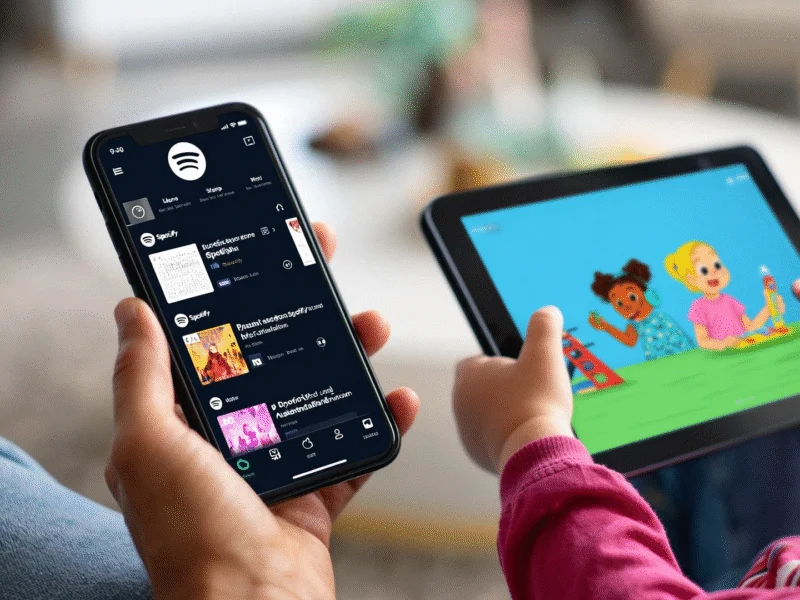Meta’s Threads platform has taken a significant step forward in its messaging capabilities with the official launch of group direct messages and the expansion of its messaging features to users across the European Union. This development comes approximately a year after Threads first introduced one-on-one direct messaging, marking a substantial evolution in the platform’s communication tools that decouples Threads from Instagram’s messaging infrastructure while adding crucial social features.
Threads Messaging Evolution: From Basic DMs to Full Communication Platform
When Meta initially launched direct messaging on Threads in July 2024, the company positioned it as the beginning of a more comprehensive communication strategy. The initial implementation provided basic one-on-one messaging capabilities, but Meta executives immediately promised more sophisticated features would follow. The company’s official blog post outlined a roadmap that included enhanced message controls, group messaging capabilities, and advanced inbox filtering options.
Since that initial announcement, Meta has consistently delivered on its promises. The platform has seen steady improvements including robust media sharing support, granular privacy settings, and enhanced controls to prevent abusive interactions. This progressive enhancement strategy mirrors the development approach Meta has taken with other platforms under the Meta Platforms umbrella, focusing on iterative improvements based on user feedback and platform needs.
Group DMs: Features, Limitations, and User Controls
The newly launched group messaging feature represents one of the most significant updates to Threads’ communication capabilities. Groups support up to 50 participants, providing substantial capacity for community discussions, team collaborations, or social gatherings. However, Meta has implemented important safeguards to prevent misuse of the feature. Users can only add people who already follow them on Threads, creating a natural barrier against spam and unwanted group invitations.
Each group can have custom names for easy identification, and Meta has confirmed that link-based invitation systems are in development. This future enhancement will streamline the process of adding participants without manual searches, similar to functionality seen in other messaging platforms and traditional chat room systems. The implementation balances functionality with security concerns, reflecting lessons learned from Meta’s other social platforms including Instagram.
European Union Expansion: Overcoming Regulatory Hurdles
Perhaps equally significant to the group messaging launch is the expansion of Threads’ messaging features to users across the European Union. This development resolves one of the major limitations that had previously affected Threads’ competitiveness in the region. The European Union market represents a crucial demographic for social platforms, and the absence of messaging capabilities had limited Threads’ utility for EU users.
According to Meta’s announcement, the rollout to EU users includes the complete messaging experience: individual direct messages, group chats, comprehensive messaging controls, privacy settings, the hidden folder feature, and full media support. The phased rollout across EU member states will occur over several days, ensuring stable implementation across different markets and user bases.
Privacy and Security Enhancements in Threads Messaging
Meta has emphasized that privacy and user control remain central to the Threads messaging experience. The platform includes multiple layers of protection against unwanted interactions, building on the privacy foundation established in the original Threads launch. Users have granular control over who can message them, with options ranging from everyone to only approved followers.
The hidden folder feature automatically filters potentially spammy or low-quality messages, similar to systems used by other Meta platforms. This approach to message management reflects broader industry trends toward giving users more control over their interactions, a philosophy that extends across Meta’s family of applications and services.
Competitive Landscape and Future Development Roadmap
The enhancement of Threads’ messaging capabilities positions it more competitively against established messaging platforms and social networks. With group messaging now available, Threads offers a more complete communication ecosystem that combines public posting with private conversations. This development comes amid significant activity in the social media and technology sectors, including developments like QumulusAI’s blockchain funding and Starlink’s expanding satellite internet services that are reshaping digital communication infrastructure.
Meta has indicated that Threads messaging will continue to evolve based on user feedback. Future developments may include additional media types, enhanced group management tools, and integration with other Meta services. The company’s commitment to ongoing improvement suggests that Threads messaging will see regular updates similar to the expansion patterns seen with NScale’s Microsoft partnership and data center developments in the technology infrastructure space.
User Experience and Platform Integration
For existing Threads users, the group messaging feature integrates seamlessly into the existing interface. The messaging tab now includes clear options for starting both individual and group conversations, with intuitive controls for managing ongoing chats. The design maintains Threads’ characteristic clean aesthetic while adding the necessary functionality for group communication.
The expansion to EU users means that Threads now offers a more consistent experience globally, addressing one of the significant gaps in its feature parity with competing platforms. This global consistency is crucial for Threads’ long-term competitiveness, particularly as users increasingly expect seamless cross-border communication capabilities.
Cultural Context and Naming Considerations
It’s worth noting that the name “Threads” carries multiple cultural references beyond the social platform. The term appears in various contexts including Sheryl Crow’s album “Threads” and numerous other cultural products. However, Meta’s Threads has established its own distinct identity in the social media landscape, particularly through its text-focused approach and integration with the broader Meta ecosystem.
For those interested in following ongoing coverage of Threads developments and other technology news, 9to5Mac’s Twitter account provides regular updates, while their YouTube channel offers video coverage of major announcements and feature deep dives.
Looking Ahead: The Future of Social Messaging
The expansion of Threads’ messaging capabilities represents another step in the ongoing evolution of social platform communication tools. As platforms increasingly blend public broadcasting with private conversation features, users gain more versatile tools for different types of interaction. Meta’s systematic approach to rolling out these features—starting with basic functionality and progressively adding more sophisticated options—demonstrates a thoughtful product development strategy.
With group messaging now available globally, including in the strategically important EU market, Threads has addressed one of the most significant feature gaps that had limited its utility compared to established competitors. The continued refinement of these features based on user feedback suggests that Threads messaging will remain a dynamic and evolving aspect of the platform in the months ahead.



